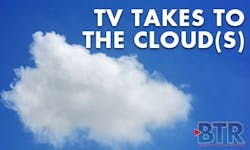By Sachin Sathaye
Since the first cloud UI deployments two years ago, the evolution of cloud-based user experiences has happened at the speed of Internet innovation. At CES this year, Charter Communications (NASDAQ:CHTR) unveiled the first pay TV guide to be streamed from the cloud to any set-top box - using technology that Charter President and CEO Tom Rutledge said "can take any kind of device and turn it into a sophisticated device." The next steps - even more radical in the pay TV landscape - are not only to deliver cloud UIs that can improve search and discovery across linear, on-demand and online content, but also to use the same foundational technology to deliver the online content itself.
Three factors - changes in consumer behavior, the proliferation of online video, and consumer expectations for consistency of service across all devices - are driving technology architecture shifts that collectively are creating an environment of software defined TV. These include:
- Network and device virtualization, including software-based transcoding and content processing, virtualization of network transport and routers, and virtualized applications execution environments
- Dynamic media adaptation, including content ingest, transcoding and delivery as well as metadata management and cloud-based DRM
- Migration to all-IP networks from QAM or IPTV delivery, creating a common architecture for cable, IPTV and mobile video delivery
For operators, virtualizing not just metadata, but also the functionality of the set-top box in the cloud has emerged as a key to creating Web-like environments on any set-top box or connected device. Cloud-based rendering of user interfaces and real-time translation of video and content security formats are enabling operators to deliver experiences that can help pay TV convert online video providers from competitors to partners that increase customer value.
Early cloud UI platforms simply rendered HTML5 user interfaces in the cloud and delivered them as MPEG video to pay TV set-tops. The latest generation renders online UIs in the cloud and stitches them with content that has been manipulated in the cloud so that the video and security formats are compatible with pay TV set-tops. The entire experience is delivered as a single video stream via a managed network channel to existing set-tops.
Initial deployments of cloud-based user interfaces by Ziggo indicated that greater ease of use and improved navigation for on-demand content could improve year-over-year ARPU by nearly 6%. In Eastern Europe, delivery to more than 500,000 existing set-tops of cloud-based UIs and content is exceeding expectations for Liberty Global's (NASDAQ:LBTYA) UPC Hungary system. The ability to navigate through the YouTube Leanback interface and to access the full library of YouTube content has attracted initial viewership of nearly 70% of available subscribers and repeat viewership of 83%, while generating TV-like average engagement of 45 minutes per session.
While the need to deliver user experiences that meet increased customer expectations has been a primary driver of pay TV's move to the cloud, the industry has identified two other benefits: First, the ability to improve the customer experience without the cost or time to market of replacing existing set-top boxes with new, high-end set-tops; and second, the ability to develop and deploy new services in days, rather than weeks or months. Using the current 4.3 million subscriber base of Charter Communications as an example, MoffettNathanson has estimated that a cloud-based strategy, rather than deployment of high-end boxes in each home, would reduce set-top capex by $1.9 billion and would reduce total cost to $750 million from $3 billion.
Where cloud-based user experiences go from here is still to be determined. In a software defined TV world, the limitations on what content can be delivered from what sources to what devices are being eliminated. Without those barriers, operators are more able than ever to accelerate the innovation and new service delivery that will meet the expectation of consumers - now and in the future.
Sachin Sathaye is vice president, product strategy and marketing, for ActiveVideo. Reach him at [email protected].
